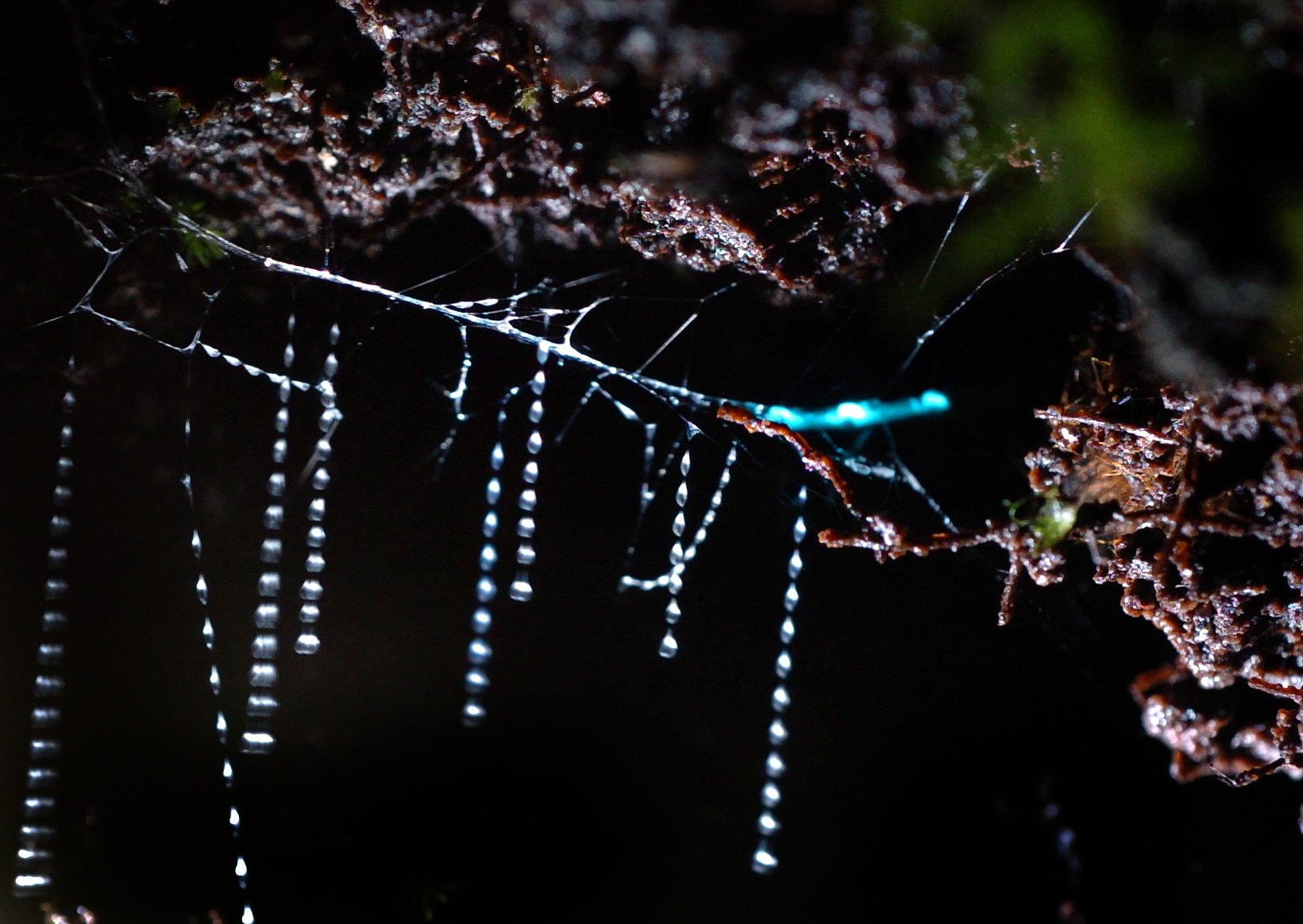

"Wow! Look at the stars!" our visitor exclaimed, before suddenly realising that the twinkling lights were actually much closer.
Moreover, they were a strange bluish colour and some were clearly brighter than others.
We were looking at some of Dunedin’s bioluminescent beauties: pūrātoke or glow-worms.
Many scientific essays about Aotearoa’s biological taonga include a disclaimer about how the English name for the organisms being discussed is inaccurate: New Zealand robins are not robins; New Zealand cockles are not cockles; blue cod are not cod.
And, of course, glow-worms are not worms.
Glow-worms are, in fact, insects, the "worm" being the larval stage of what grows up to be a small fly, known as a "fungus gnat".
Their life cycle is an example of holometabolism, with four stages that look completely different: egg, larva, pupa and fly. This sort of developmental change, also called complete metamorphosis, is thought to have evolved only once, since all the insects in which it occurs — beetles, flies, ants, bees, wasps, butterflies, moths, fleas and several other groups — are each other’s closest relatives.
The glowing worms moult several times over a 10 to 12-month period as they grow to reach almost 4cm in length.
These larvae — maggots if you like! — produce numerous sticky silken threads that dangle below their nests, which are like a silken hammock, into which they can retreat if disturbed.
A unique biochemical reaction produces the bluish light in the abdomen, attracting potential prey that blunder into the hanging threads.
It seems that hungrier glow-worms have brighter lights, hence the variation we saw in our night-time bush walk.
Worms transform themselves into pupae while suspended from a long silken thread.
The glowing continues during pupation, especially in females, even though it no longer has any apparent function, since the pupa cannot feed.
The pupation stage lasts about two weeks, before the adult fly emerges.
Interestingly, even adult glow-worm females have some residual glow.
Some scientists have suggested that the glowing of female flies attracts male suitors, but the evidence is equivocal.
Adult glow-worms, titiwai, the flying fungus gnats, live just a few days and also do not eat.
Instead their focus is on mating and, in the case of females, laying eggs on the walls of caves and dimly lit banks in the bush.
The eggs are less than 1mm in diameter and hatch after three weeks or so into tiny larvae about 4mm in length.
They have a lot of eating to do to become 10 times this size!
Any flying insects, including adult glow-worms, mosquitoes and midges, are fair game, literally.
Glow-worms are an Australasian specialty, living in the gullies and caves of rainforests.
Aotearoa New Zealand has just one species, known scientifically as Arachnocampa luminosa (which translates roughly as glowing spider-web worm), found in dark, damp places throughout the country. Eastern Australia harbours a further eight or nine species in the same genus.
Glow-worms are restricted to sheltered places (such as caves) because too much wind would tangle their dangling traps. Large cave systems, such as Waitomo in the Waikato and Te Anau in Fiordland, are ideal and have huge populations. But keep your eyes peeled, too, for sheltered banks in the bush where smaller numbers of these hungry beasts may be lurking.
And, in case you were wondering, the European glow-worm, as well as the famed fireflies of North America (whose larvae also glow and are hence also called glow-worms), are neither flies nor worms: they are beetles.
Nothing is what it seems, not even a starry sky at night!
Hamish G. Spencer is Sesquicentennial Distinguished Professor in the Department of Zoology at the University of Otago











